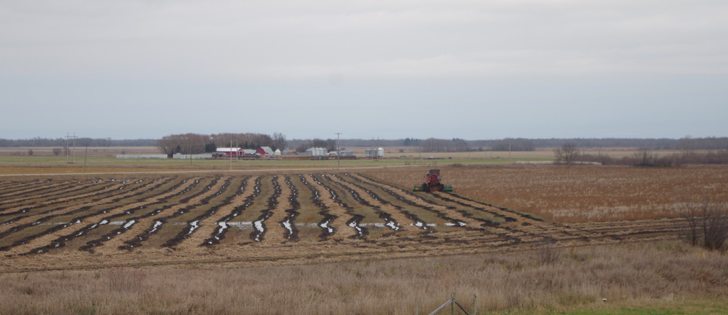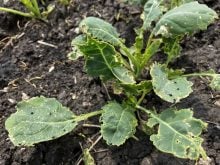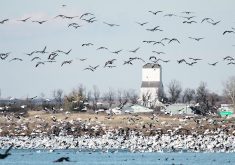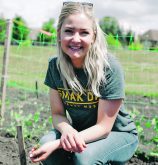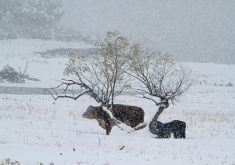When Doug Northcott looks at his canola, he sees swaths of income slowly rotting away on fields too wet to work.
When he looks into his bins, he sees lots that needs attention right now, but he can’t do that either.
“We’ve got grain to dry but we can’t move around (the yard) really because it’s so wet that whatever gravel we have will be pushed into the ground if we start moving around on it,” said Northcott, who heads the The Pas Farmers Association in the semi-isolated northern farming region.
Read Also

Trump cuts off trade talks with Canada
UPDATED: October 24, 2025 – 0910 CST – Adds comments from Prime Minister Mark Carney. Reuters — U.S. President Donald…
Up to three times as much rain as usual has soaked the area’s soil since August, bringing the water table almost to the surface.
Crops lie in fields, looking less and less likely to be harvested before next spring. Bales of hay sit in water on soaked hay fields. Pastures are muddy messes. Cattle are treading through soaked soil, damaging pasture and their own feet.
With winter quickly approaching, the next few months look grim.
Rod Berezowecki, reeve of the Rural Municipality of Kelsey, said the inundation of heavy rain since late summer has badly disrupted the local farming community.
“This year has been an overwhelming year for water, and it’s overwhelming our resources,” said Berezowecki.
Farming around The Pas is unique, being conducted in a broad plain drained by slow and lazy rivers that flow out of the surrounding forests. It is 200 kilo-metres north of the Swan River area, which many people assume to be the northernmost farming region in Manitoba.
It’s an archipelago of farms and ranches on a soil surface only a few centimetres above the water table. Rain can cause overland flooding, which is exacerbated when the water table is raised by the water pushed back by the Grand Rapids hydro electric plant to the east on the edge of Lake Winnipeg.
Pumps often run continuously to get water into the local rivers, which is what is happening now. The local infrastructure is maxed out, Northcott said, and improvements are needed.
The local plight recently received publicity when one farmer’s situation, with cattle stranded and hay spoiled, became known through an online petition that was shared on Facebook.
The farmer, Tim Berscheid, has said he believes the RM is creating many of his problems because of the way it is operating local pumps.
However, the RM and the provincial government say the problems come from the huge amounts of recent rainfall overwhelming the ability of the system to alleviate it.
Northcott said wet years seem to have become more common, so farmers’ problems with saturated soil are growing. He’d like to see more drainage infrastructure and better maintenance of the existing system.
Berezowecki said anxiety is general among farmers.
“All the producers are feeling some stressing issues with overland flooding,” he said.
“October especially has been just unbelievable.”
Brian Lemon, general manager of Manitoba Beef Producers, said farmers are worried as cold weather arrives.
“They’ve had trouble all summer long cutting hay. They’ve had trouble all summer long getting into pastures. They’ve had trouble putting up hay,” said Lemon, who has been talking with local and provincial government officials about the situation.
“It’s almost unique. It’s an intricate system that runs very, very well most times, but when you combine it with the amount of rain we’ve had, it makes it hard to keep up.… It’s an unfortunate sort of perfect storm that has come up.”
Northcott said he and other farmers are heading into freeze-up anxious, worried and dreading the winter.
“It’s extremely frustrating up here, and it’s hard on your head.”
He estimated that 60 percent of his crop is still in the field.


